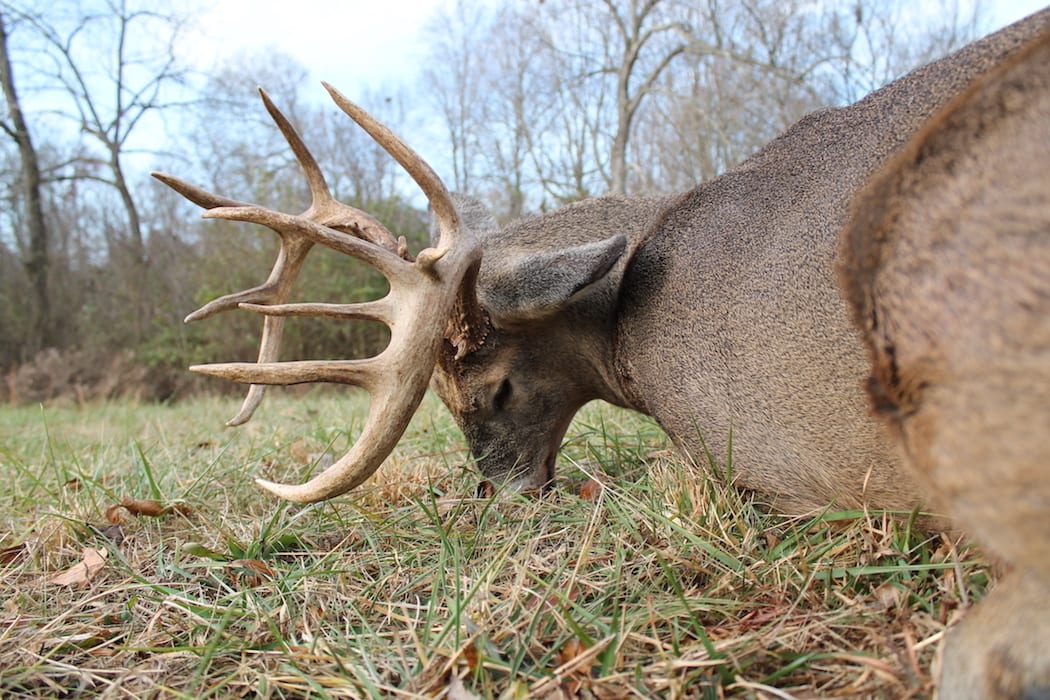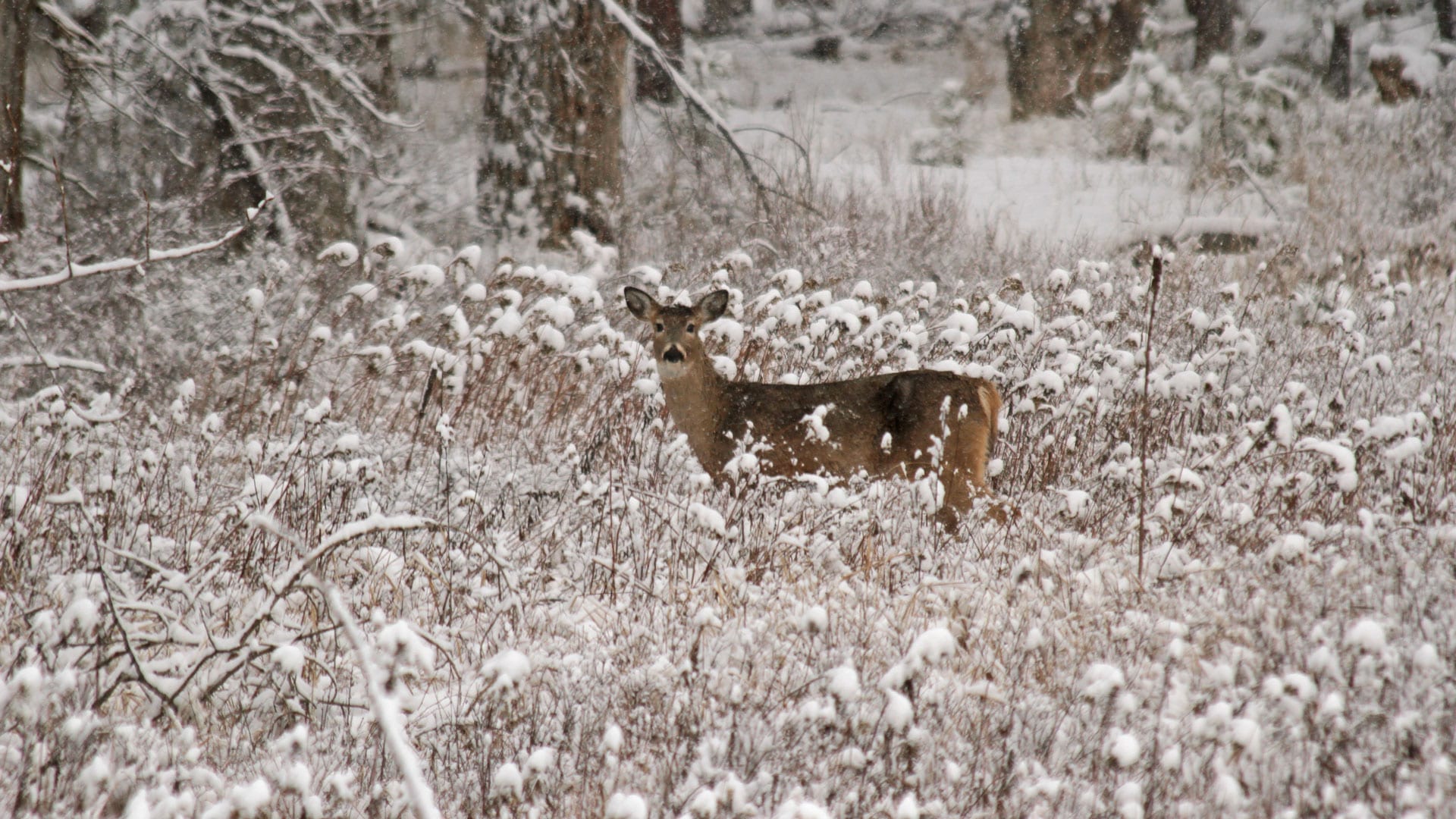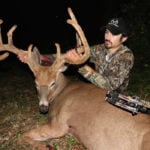Deer hunting is one tough endeavor. Anyone who’s ever said it’s easy either hasn’t done it or hasn’t done it long enough. Because however you skin it, it’s a challenge.
There are many things with the ability to complicate a hunt. Easily (and often) among them is weather. Other than hunting pressure, I believe weather can influence a hunt faster than any other factor. It can make a hunt great. And it can bring deer activity to a screeching halt. Simply put, you either love or hate the weather, and it can change daily.
Hot Weather
A lot of hunters despise warm weather. And while I’ll take cold temperatures over warmer ones every day of the week, that doesn’t mean I allow them to keep me from heading afield. Just because it’s warm out doesn’t mean you can’t kill a deer. You just have to adjust and make sure your efforts and tactics match the conditions. One such tactic for warm weather is hunting near green food sources such as turnips and wheat.
When it’s hot, focus on water, too. Deer need to drink several times each day. Because of this, focusing on well-used water sources can be extremely effective, especially during periods of draught and when water sources are limited. Focusing on water isn’t nearly as effective during times of rain (even when it’s really hot) because the resource is abundant at such times.
If you’re hunting does, ponds and streams are great options to set up on. But if mature bucks are on your mind, find the most secluded water source you can find that is located near thick bedding cover. Set up on the downwind side and get ready for some action. Remember, older deer will drink out of a mud puddle if that means they don’t have to expose themselves and leave cover for larger water sources. Keep that in mind when choosing an area of focus.

Want to put a buck on the ground? Learn to hunt him in any weather.
Cold Weather
This is what we all love — cold weather. It’s the preferred big brother to warm weather and makes hunting — an already difficult activity — a little bit easier. That’s why we welcome it with open arms any time we go afield.
Cold weather provides a deer hunter with several benefits. When it’s cold, deer seem to really hit the high-carb food sources. Grains such as corn and soybeans suddenly become extremely attractive to deer when the mercury plunges.
Another important thing to remember is water. What does it do when it gets really cold? It freezes. Water sources begin to freeze and lock up. During times where water stays frozen and snow isn’t falling (deer consume snow as a water source), it really stresses deer and they congregate around the few remaining open water sources. These are usually moving bodies of water such as creeks, rivers and spring-fed ponds. Setting up near these can be really productive.
As for bedding locations, areas with a heavy presence of conifers to hold in heat should produce results. Also, look to find deer in areas that haven’t been pressured yet. That’s where they’ll be late in the season. Lastly, look to the south- and east-facing slopes where deer will bed to catch the first rays of the morning sun.
Windy Days
It’s a common misconception that deer won’t move in the wind. However, I’m here to say that they do. You just have to switch up your tactics to find them.
If in heavy cover, deer will move whether it’s windy or not. They feel safe there and don’t have a problem moving about when concealed from prying eyes. The downside to this is it’s hard to hunt them when you can’t see them. So you have to do the best you can.
Another common occurrence is for deer to dive into cuts, hollows, ravines, drainages and other geographical features where they can avoid the wind. Hunting in such places on windy days can really up the odds of success.
Rainy Days
Deer don’t move well during heavy rain. But light rain is a different story. The deer seem to come out a lot more when it’s misting rain. Why? I’m not sure. Maybe they like their salad with dressing. Maybe they like the cooler temperatures. In all seriousness, I think it might help them digest food and make it more palatable. Who knows. But I do know deer move more in a light rain.
I generally hunt off the edges of quality green food sources on rainy days. Another good location is close to known buck bedding areas. Light rain has the ability to get big bucks up on their feet earlier in the day. Positioning yourself between these two locations can be super effective.

Deer don’t get a break from the weather. Tough it out in any conditions and you’ll punch more tags.
Snowy Weather
This is every southerner’s dream and every northerner’s typical day in the woods. But regardless of which one you are, snow is good for deer hunting. It can help make an unfilled tag a filled one.
Snow helps you see what’s truly going on out there. It makes finding tracks a lot easier and tells a tale of how the deer are using the land you hunt on. Because of this, I greatly increase the amount of ground I scout on foot so that I can find the most obviously used trails. It’s worth the risk of bumping deer when you have this tool at your disposal.
Another tactic that comes with the territory is tracking. I’ve also spent time tracking deer and following their tracks. Moving very slowly, you can do this and follow them back into their bedding areas. Granted, it takes serious stalking skills to keep from being detected. But it’s possible and there’s no greater feeling than slipping up on a deer and arrowing it from the ground in the snow.
Deer will be active when the snow begins to pile up. The options for food will decrease dramatically causing deer to be on a relentless pursuit for the groceries.
Conclusion
Think twice before you decide to stay home because of the weather. Deer don’t take a day off in the whitetail woods, and if you still want to punch that tag, neither should you.

 By
By 



